How Israel’s ‘super-accurate’ Spike missiles killed aid workers in Gaza
The IDF’s Black Snake squadron was carrying a Hermes 450 drone equipped for a ‘clean and highly targeted’ attack.

Flown by an Israeli air force squadron known as Black Snake, the Hermes 450 drone believed to have pursued an aid convoy travelling along Gaza’s coastal road carried a missile that was designed to kill cleanly.
Chris Lincoln-Jones, a former British Army major who has worked with the Israel Defence Forces (IDF), thinks there is a “high likelihood” that three Spike missiles fired in quick succession smashed into the vehicles on Monday night, killing three Britons, an Australian, a Pole, an American-Palestinian and a Canadian-Palestinian.
“It’s absolutely perfectly accurate,” he said after studying images of the shattered convoy, the vehicles’ roofs pierced cleanly by the weapon. “If you aim at the driver’s side, you will hit the driver full-on. If you were across the street from the car, you’d be shaken up and you might be hit by a few splinters, but you would survive.”
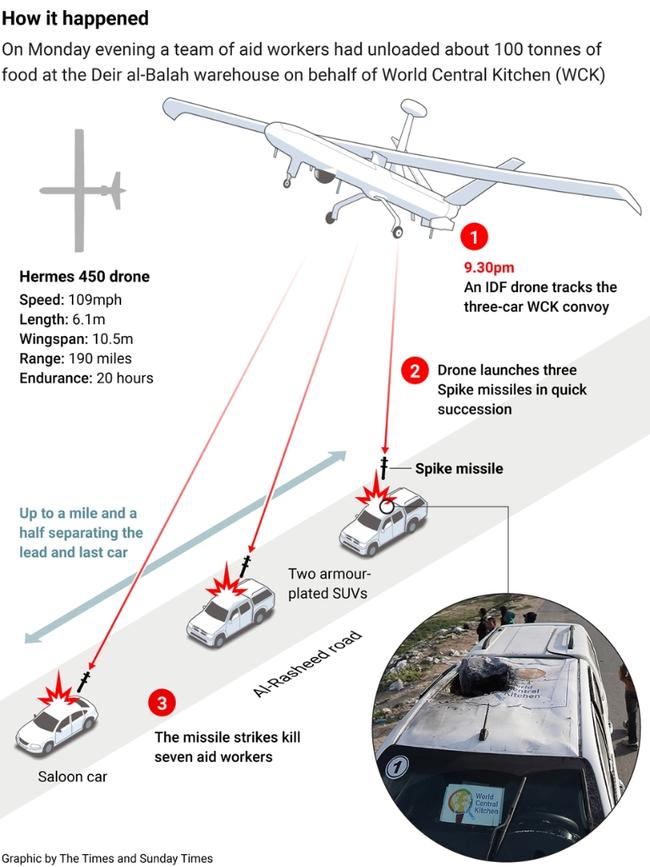
Lincoln-Jones would know. He has spent five years studying IDF military hardware in Haifa and Tel Aviv, where he was involved in the procurement of the British Army’s Watchkeeper drone, based on the Hermes 450. They are equipped with Spike “fire-and-forget” missiles made by Rafael Advanced Defence Systems, an Israeli arms company.
Images of the three destroyed vehicles suggested a series of highly targeted strikes, he said. “It’s the only missile that I know of in the Israeli army that, in my experience, would cause so little collateral damage. It would kill only the people in the car,” he said.
By about 9.30pm, when the vehicles carrying the aid workers were driving along al-Rasheed Road towards the Egyptian border, the frying pan images on their roof – the logo of World Central Kitchen (WCK) – had become almost commonplace.
The vehicles were delivering emergency aid, food and supplies that had been dropped off via barges, temporary piers and convoys.
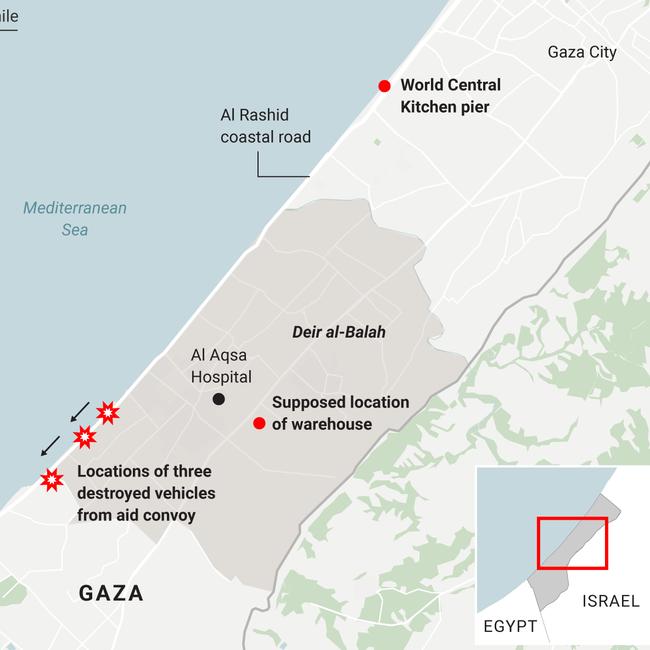
In the days before, WCK had been preparing for its second shipment to Gaza, of 400 tonnes of aid – enough to make a million meals. Among the supplies of rice, pasta, flour and canned vegetables was a “special shipment” of dates, to break Ramadan fasts.
The convoy consisted of three vehicles, two of which were armour-plated SUVs and the third a saloon with a “soft skin”, apparently unmodified. They were travelling some distance apart, with about a mile and a half between the first car and the last. The passengers were wearing bulletproof vests with WCK patches.
They were driving to the staging area at the Rafah crossing, along the long coastal road, which is often crowded. An Israeli army checkpoint sits north of the WCK jetty pier and a military road runs west to east, blocking it off from the rest of northern Gaza.
A different route from the warehouse to Rafah is quicker and more secure for aid trucks, but its use is forbidden by the IDF and it remains closed.
The road they took is known as a high-risk area, where aid workers have been put in danger because of the breakdown in civil order and military shooting and shelling. A private security worker familiar with co-ordinating safe passage for aid groups in Gaza told The Times that aid workers “have to identify either with a local commander or the [IDF’s] Southern Command, which does not work in real time as there is the chance of information not reaching the ground as it trickles through the chain of command. However, the urgent need to transport aid and the limited convoy routes likely meant there was no other option.”

A military source who operates in Gaza said the location meant forces were on high alert. Although humanitarian activity may be known to those on the ground, the “eye in the sky” may identify a threat and fire without co- ordination with ground troops.
Some “incidents are open to interpretation by IDF troops”, the source said, and designated as “safe zones” and “kill zones”, where the Israeli military are in full operation, and can change at any time. The rules of engagement include instructions such as “free to fire” and “closed to fire” – for example, when IDF units or humanitarian workers are nearby, unless there is a direct threat.
It was not immediately clear what the rules of engagement were on the road, or whether the drone operator spotted a threat and took the decision to open fire without receiving permission from the commander, as protocol dictates.
Near the road there are signs that read: “Crossing this line can result in death.” However, the source stated that often it was an individual’s decision as to whether a vehicle or person posed a threat or was simply searching for food.
Some aid workers are reported to have complained that they had come under fire from an “IDF sniper” when travelling along the same highway days earlier. Among them was John Chapman, one of those killed, a British former member of the Special Boat Service.


According to their colleagues, members of the convoy were taking no chances that night and had co-ordinated their movements with the Israeli military. Hours earlier, members of the group had met Sigrid Kaag, the UN’s special humanitarian co-ordinator for Gaza, to discuss improving conditions for aid delivery.
In a statement, WCK said its team had been travelling in a “deconflicted zone in two armoured cars branded with the WCK logo and a soft-skin vehicle”. It added: “Despite co-ordinating movements with the [Israeli army], the convoy was hit as it was leaving the Deir al-Balah warehouse.”
Lincoln-Jones said a Hermes 450 would have had a clear image of the charity’s logo. Given that the route had been approved by military authorities, he said Israel “probably even knew the names of the people on board”.
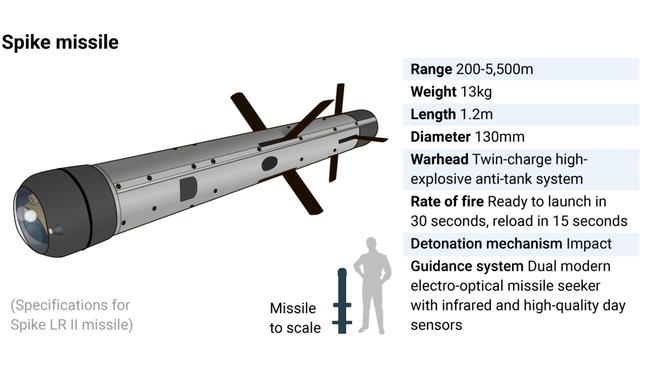
WCK added that its team had co- ordinated with Israeli military officials and had clearance to use the route. Israeli officials said they had been working closely with WCK in Gaza for months, with one military source calling them the “good guys”.
After about 100 tonnes of supplies was dropped off at the warehouse in Deir al-Balah, the first explosion was heard by a technician working for the humanitarian organisation the Palestinian Red Crescent, not far from the road. Minutes later two more air strikes were heard.
The first people to arrive on the scene described seeing bodies shredded by the explosions but with their bulletproof vests still visible.
In a video filmed by a 29-year-old volunteer medical technician and shared with The Washington Post, rescue workers are at the scene. “They are foreigners,” one says, surveying the interior of a white Toyota. “Why were they struck?” another asks. “I have no idea why they were struck. How would I know?”
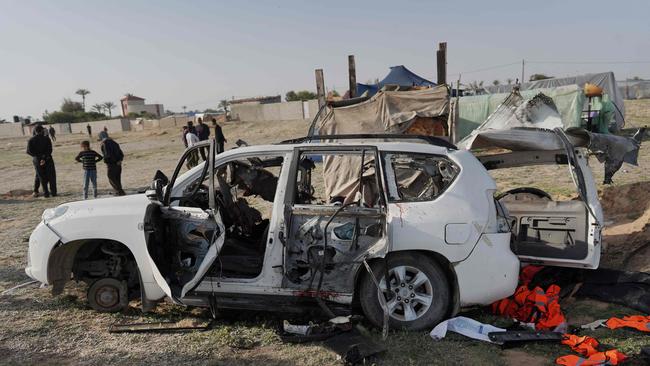
One vehicle was found on the side of the road, facing north, the windows blown out and the doors blackened. The second vehicle, the Toyota, was in the middle of the road half a mile to the south, a hole punched through its roof next to the logo, which spanned nearly half its width. A third vehicle was found a mile away. The strikes reportedly happened one after the other. The third car, according to images, appears to have had the most extensive damage, suggesting that the soft-shelled car was hit last.
The IDF is said to have been trying to kill an armed Hamas fighter they believed was hiding in a food warehouse visited by the convoy. However, there is growing concern about Israel’s command and control in Gaza. Military sources told the Haaretz newspaper that “undisciplined, rogue commanders” were responsible for the strike.

A source in the intelligence branch said the IDF’s Southern Command “knows exactly what the cause of the attack was: in Gaza, everyone does as they please”.
After he had been presented with what he said were initial findings from Israel’s investigation into the deaths, Herzi Halevi, the chief of the general staff who leads the Southern Command, issued a sombre apology. “It was a mistake that followed a misidentification, at night, during a war, in very complex conditions,” he admitted. “It shouldn’t have happened.”
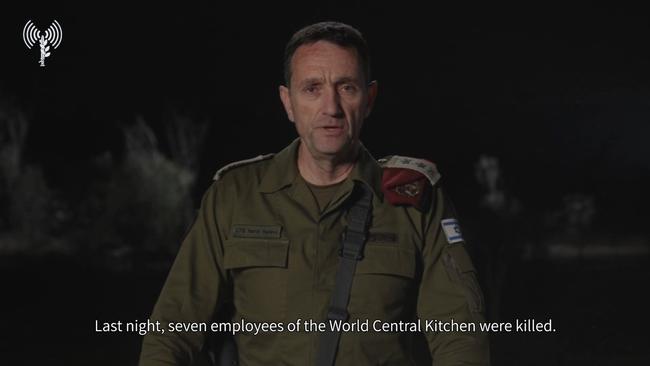
Even if Hamas fighters had been in the cars, Lincoln-Jones questioned why the attack had been authorised. “The British Army would under no circumstances have fired on that convoy, even if we could positively identify a Hamas gunman getting into one of the cars. You would know that every single person in the car would die. It would be inconceivable that the British or Americans would do that. The fact the Israelis destroyed all three cars is unforgivable.
“Hamas is a terrorist organisation completely beyond the pale. What Hamas doesn’t do is claim to be anything else than what it is. The Israelis claim to be a civilised, western-facing armed force. They are plainly not.”
The Times


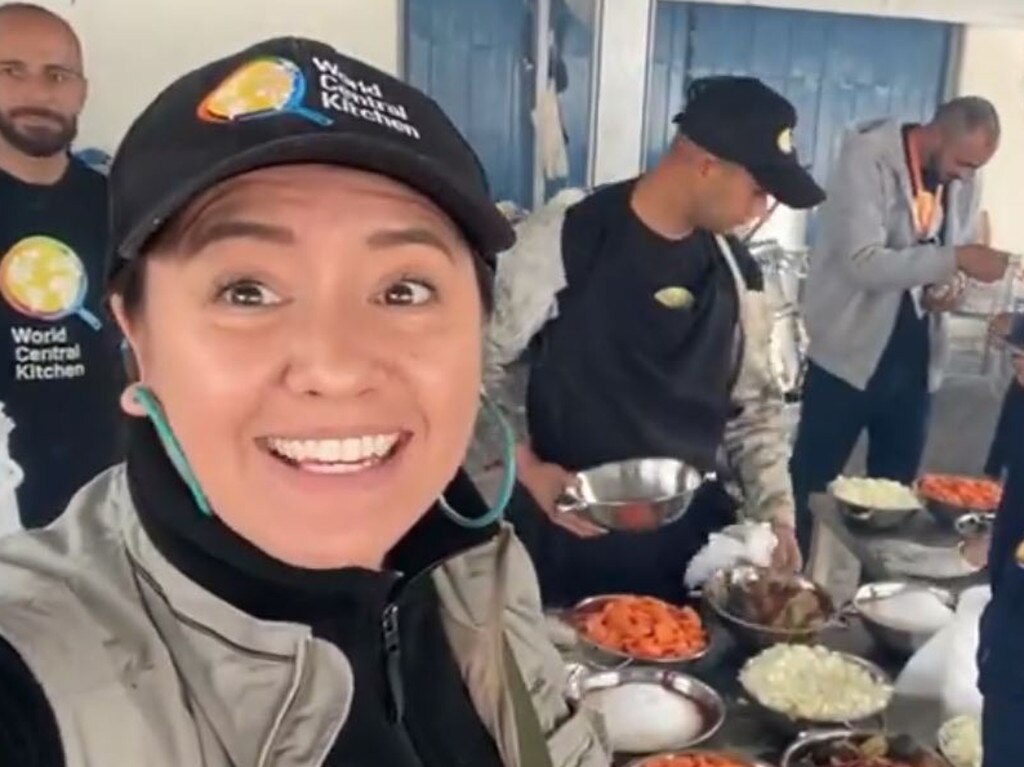


To join the conversation, please log in. Don't have an account? Register
Join the conversation, you are commenting as Logout